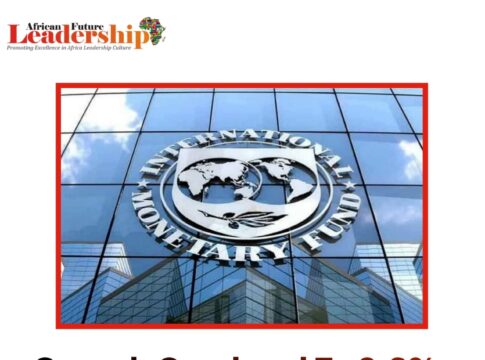The International Monetary Fund( IMF) in its rearmost World Economic Outlook update for January, released last night, has reviewed overhead growth protrusions for Nigeria in 2023 from 3.0 per cent which was projected in October last time to 3.2 per cent as it retained the growth cast for 2024 at 2.9 per cent.
Before this month, the World Bank had farther reviewed the country’s projected growth to 2.9 per cent from 3.1 per cent last time. The World Bank in its January Global profitable Prospects released had said Nigeria’s slower growth for 2023 and 2024 is a reflection of the downturn in its oil painting sector as well as the fate of rising instability and flooding.
Advanced growth protuberance for Nigeira by the IMF also impacted cast for Sub Saharan Africa which saw a slight upward review form 3.7 per cent to 3.8 per cent in 2023, whilst 2024 remained at4.1 per cent. Global growth is projected to fall from an estimated 3.4 percent in 2022 to 2.9 percent in 2023, also rise to 3.1 percent in 2024.
According to the IMF WEO for January, the Sub Saharan Africa growth is projected to remain moderate at 3.8 percent in 2023 amid dragged fallout from the COVID- 19 epidemic, although with a modest upward modification since October, before picking up to 4.1 percent in 2024.
READ MORE: PDP Party’s Appeal Court Cases in Rivers: National Leadership Takes over
“The small upward modification for 2023(0.1 chance point) reflects Nigeria’s rising growth in 2023 due to measures to address instability issues in the oil painting sector. In South Africa, by discrepancy, after a COVID- 19 continuing answer in 2022, projected growth further than halves in 2023, to 1.2 percent, reflecting weaker external demand, power dearths, and structural constraints. ”
For the global frugality. the cast for 2023 is 0.2 chance point advanced than prognosticated in the October 2022 World Economic Outlook( WEO) but below the literal( 2000–19) normal of3.8 percent. The rise in central bank rates to fight affectation and Russia’s war in Ukraine continue to weigh on profitable exertion.
“The rapid-fire spread of COVID- 19 in China dampened growth in 2022, but the recent reopening has paved the way for a briskly- than- anticipated recovery. Global affectation is anticipated to fall from 8.8 percent in 2022 to 6.6 percent in 2023 and 4.3 percent in 2024, still above pre-pandemic( 2017–19) situations of about 3.5 percent.
“Signs are apparent that financial policy tightening is starting to cool demand and affectation, but the full impact is doubtful to be realized before 2024. Global caption affectation appears to have peaked in the third quarter of 2022. But underpinning( core) affectation has not yet peaked in utmost husbandry and remains well abovepre-pandemic situations. It has persisted amid alternate-round goods from
Earlier cost shocks and tight labor requests with robust pay envelope growth as consumer demand has remained flexible.
“Medium- term affectation prospects generally remain anchored, but some needles are over. These developments have caused central banks to raise rates briskly than anticipated, especially in the United States and the euro area, and to gesture that rates will stay elevated for longer. Core affectation is declining in some husbandry that have completed their tightening cycle.




